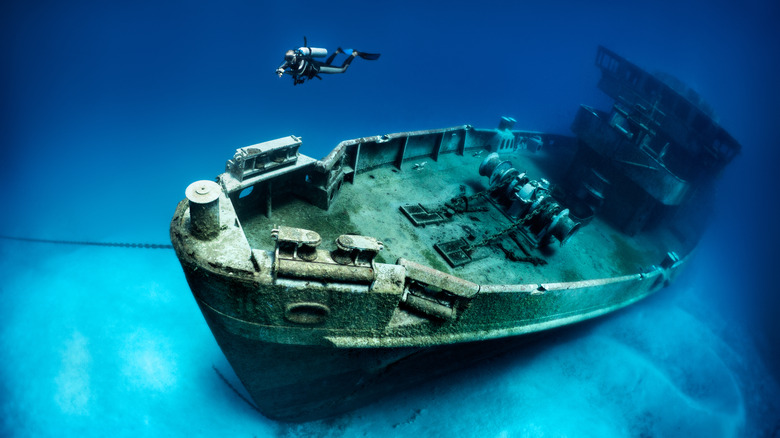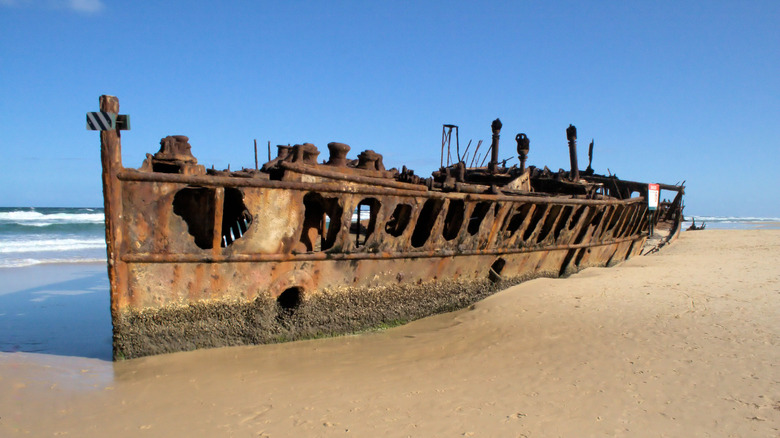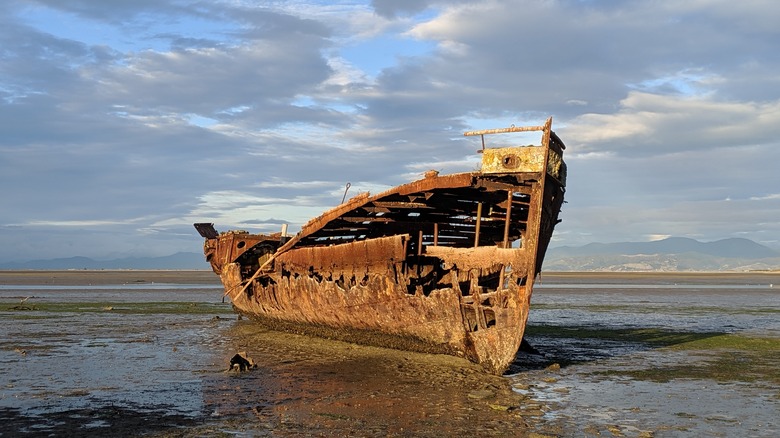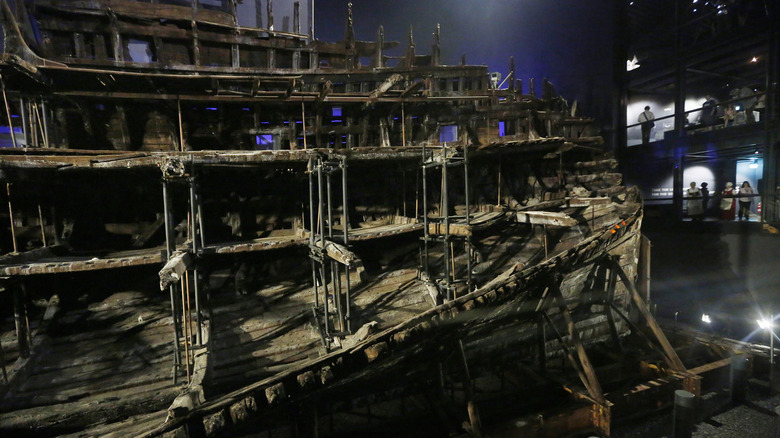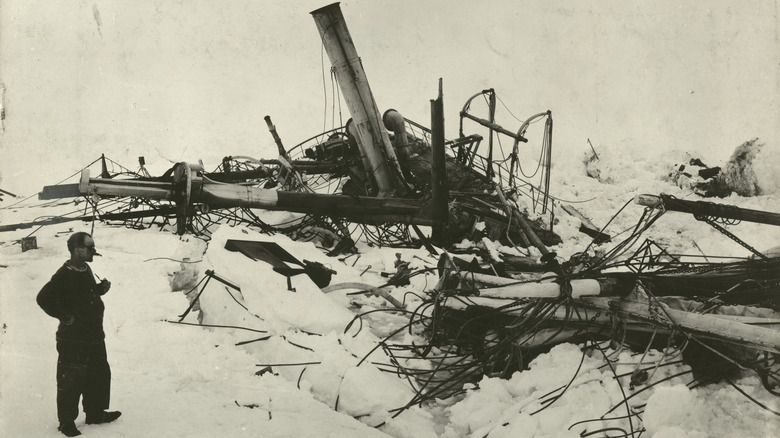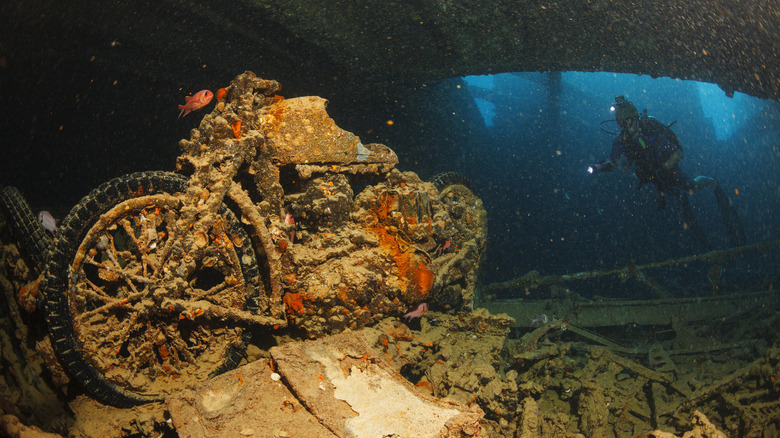12 Of The Most Fascinating Shipwrecks From Around The World
Scattered across the world, countless shipwrecks lie on the ocean floor. These vessels act as time capsules, relics frozen in time with stories written in wood and metal, chronicling chapters of human exploration, trade, and tragedy. Like an eerie, watery graveyard, each wreck is a unique echo in the ocean's abyss, a soundless shout from the past that reaches out to those who listen.
Shipwrecks are tangible links to our past, providing valuable insights into historical ship construction and the lives of those aboard. The remnants of shipwrecks aren't just artifacts — some hold treasures like gold, silver, gemstones, and mysteries that lure adventurers and researchers alike.
These underwater wrecks also serve as artificial reefs, teeming with diverse marine life that attracts marine biologists and scuba divers. Some ships have encountered mysterious fates, fueling folklore and legends. There's so much to cover, and we've barely scratched the surface, so let's do a deep dive into some of the most fascinating shipwrecks from around the world.
Uluburun
While shipwrecks from the Bronze Age are not uncommon, the 50-foot-long, 16-foot-wide Uluburn ranks up there as the most interesting for a few reasons. It's the oldest dated shipwreck recorded (around 1330 and 1300 B.C.). To uncover the age, underwater archaeologists used several methods, such as carbon dating of firewood found onboard via dendrochronology, noting the specific style of pottery, and artifacts with specific datable info. For example, a gold seal was discovered with Egyptian Queen Nefertiti's name on it.
This shipwreck is found off the southwestern coast of modern-day Kaş, Turkey, and contains a diverse and large quantity of cargo. So much cargo, in fact, that over 17 tons of artifacts were brought up after 22,400 dives. Due to the depth of the shipwreck (144 to 200 feet), explorers were restricted to short dive times of 20 minutes, and multiple dives were needed.
Most of the cargo found included raw materials like 348 copper ingots (weighing a total of 10 tons), 120 tin ingots, elephant and hippopotamus ivory, ostrich eggs, gold, and the earliest known glass ingots ever to be found. Plenty of finished goods were also found onboard, like Egyptian jewelry and weapons used for trading. Food like olives, almonds, figs, and pomegranates was also on the vessel. The cause of the Uluburun wreck is unknown, but it remains a rare undisturbed time capsule of the past, giving us a unique window into Bronze Age maritime trade.
Antikythera
Named after the Greek island of Antikythera, this shipwreck was first discovered in 1900 by divers who collected natural sponges from the seafloor. When first spotted, it was mistaken for a site of rotting corpses, but the bodies turned out to be a collection of bronze statues. Thought to have been sunken from a storm around 60 B.C., this vessel was believed to have been en route to Rome, carrying many coins, bronze, and marble statues, which are now housed at the National Archaeological Museum in Athens.
More artifacts are still being discovered today, but the most well-known is the mysterious Antikythera Mechanism, dubbed the world's first computer. This ancient analog contraption is believed to have been used to track the stars. It's so popular that engineers even built working reproductions of the Antikythera Mechanism from Lego.
What makes this shipwreck particularly fascinating is the speculation surrounding what remains on the ocean floor. Since the first official investigation from 1900 to 1901, only one other undersea explorer — Jacques Cousteau — was permitted to dive, doing so in 1976 to film the TV show "Diving for Roman Plunder." Since that last dive, no one had dived the wreck until 2012. Today, divers armed with more sophisticated equipment and modern metal detectors aim to find more artifacts, and are conducting more dives. Excitement surrounds the prospect of finding another ancient computer or something even more mysterious.
SS Maheno
The SS Maheno is a popular shipwreck beached on the coast of Australia's Fraser Island. Named after the Maheno district of New Zealand's South Island, where it was built in 1905, the ship has a long history. Initially serving as a luxury cruise ship traveling between Sydney (Australia) and Auckland, it was later used as a hospital ship during World War I, after which it was named the HMNZ Hospital Ship No. 1.
The ship transported soldiers from Gallipoli to hospitals everywhere from Lemnos to Malta, Alexandria, and Southampton, and also carried the wounded from major battles on the Somme and around Ypres in France and Belgium. She was a lifesaver of a vessel that carried a total of 14,361 sick and wounded soldiers from all nationalities, with most being Australians and New Zealanders.
In 1935, the ship was sold to a Japanese shipbreaker with the intention of being dismantled for parts, but it never made it to Japan. Instead, the SS Maheno was hit by a cyclone that ran the ship aground on Fraser Island, where it remains a tourist attraction to this day.
Janie Seddon
A small shipwreck sits derelict along the shore in the small town of Motueka in New Zealand's South Island (Te Waipounamu in Māori). Constructed in 1901 in Scotland, the Janie Seddon was a famous coal-powered ship built for laying submarine mines. She served multiple purposes and was the last ship the New Zealand government used in both World Wars. It is even speculated that she fired the first shot in World War II.
In the evening, when the tide is low, concrete slab stepping stones form a path so visitors can hop through the muddy bank to get a closer look at the ship's decaying, rusty metal skeleton. The setting sun lights up this ancient piece of history, attracting shutterbugs and curious passersby alike. Some consider it an eyesore and a risk, but many locals have appealed against removing it. According to local Johny O'Donnell in an article about the wreck on Stuff, "The Janie Seddon is an absolute icon, a symbol of the history of Motueka, and one that ought to remain exactly where it is."
She was used as a harbor examination vessel, inspecting incoming vessels and scouting the bays for mines. In 1946, she was purchased by the Motueka Trawling Company Ltd. and converted to a fishing trawler. Eventually, she became a financial burden and sank at her moorings at the Motueka Wharf. Since 1953, this iconic landmark has been beached and is a reminder of the area's maritime history.
Whydah Gally
Discovered off the coast of Cape Cod, Massachusetts, in 1984, the Whydah Galley shipwreck contains treasures and artifacts that tell tales of piracy in the 18th century and is the only pirate shipwreck ever authenticated. Constructed in London in 1715, the vessel served as a slave ship, but after being captured by Captain Samuel "Black Sam" Bellamy in 1717 in the central Bahamas, it was quickly converted and added to the crew's growing fleet of pirate ships.
But the Whydah wasn't at sea for very long. It sank less than a year after being hit with one of the most intense storms in New England history, with only two men surviving. For a short time, the ship served as Bellamy's "bank," and so far, divers have recovered over 15,000 coins. It's been reported that the Whydah held over $120 million worth of gold and silver, totaling some four and a half tons. According to the Whydah Pirate Museum, "The stories of these artifacts, as well as that of the ship herself, knit together over a dozen countries on four continents."
Ghost Fleet of Truk Lagoon
Instead of just one shipwreck, the aftermath of "Operation Hailstorm" during World War II left over 48 Japanese ships at the bottom of the Pacific. The aerial bombardment by the U.S. Navy was in retaliation for the Pearl Harbor attack. The bombing ended up creating one of the world's greatest wreck dives, also considered war graves. Scuba divers who visit Truk Lagoon (part of Caroline Island in Micronesia) can see guns, planes, motorcycles, tanks, planes, and more. In addition to the munitions, divers witness diverse marine life like sharks, coral, and sponges.
The Shinkoku Maru was a naval tanker now considered the most popular wreck to dive. Other famous wrecks for divers include the Unkai, Rio de Janeiro, Sankisan, Hoki, Fujikawa, Nippo, and Heian Maru. Each offers a different experience, as some were once cargo ships, freighters, passenger ships, and submarine tenders. Scuba divers can swim through the wrecks, witness these wartime time capsules, and experience the eerie Ghost Fleet of Truk Lagoon.
The San José
When one thinks of shipwrecks, the first thing that comes to mind is treasure like gold, silver, and gemstones; the imagination runs wild. Enter the San José, the most valuable shipwreck in history. This Spanish ship is estimated to have carried between $17 and 20 billion worth of treasure. The shipwreck was first discovered by the Columbian Navy in 2015, and since then, all that treasure has sat on the ocean floor, untouched.
In 1708, the San José was attacked off Cartagena, Colombia, by a British squadron and sank, taking with it all the treasure. To this day, it is said that cannons, coins, and gold bars are in pristine condition, some 2,000 feet lying on the ocean floor. While the Columbian government claims ownership, Spain technically still owns the San José under international maritime law. If you're getting any ideas to go out and scavenge the wreck, good luck — the exact location is a heavily guarded secret.
Nuestra Señora de Atocha
Diving into the depths of history, we encounter the valuable Nuestra Señora de Atocha. The ship was built in Havana Harbor, left port, then boom, a massive hurricane struck and sealed the ship's fate beneath the ocean, killing 260 people with only five survivors making it out. The ship was loaded up to return to Spain along with eight other boats, but because it never made it, it dealt a heavy blow to Spain's economy.
Centuries passed, with the Atocha's fate fading into legend. That was until 1985, when the famous U.S. treasure hunter Mel Fisher, after spending over 15 years searching, discovered the wreck. The treasure inventory included 1,200 pounds of silverware, 125 gold bars, 24 tons of silver ingots, coins, and bullion.
This wreck has an estimated $450 million worth of copper, gold, silver, and gemstones, some of which are still sitting at the bottom of the ocean just off the coast of Florida. The Atocha shipwreck is legendary with experts claiming it to be the "greatest treasure ever found." Diving is allowed, but diving with anything resembling a metal detector is forbidden.
Mary Rose
Assembled in Portsmouth in 1510 at the beginning of Henry VIII's reign, the Mary Rose was one of the king's favorites, likely because the ship was constructed in his dockyard. The king was an avid shipbuilder and also founded the Royal Navy. Its fleet would grow, but the Mary Rose was his number one. The vessel sailed for nearly 34 years until meeting its watery grave, sinking in 1545 during the Battle of the Solent against the French.
There were plans to bring the Mary Rose back to life and salvage her by bringing the ship closer to the surface, moving it to shallower water, emptying the vessel, and pumping out water to get her to float. However, after days of attempting to move her (only snapping her masts), the operation was called off. The Mary Rose still had roughly 2 million pounds worth of guns lying on the sea floor. After attempts were made to salvage and recover the guns, the ship was eventually abandoned in 1552.
It remained lost until a 1965 search by Alexander McKee, using old charts from 1841, revealed historic wrecks from the Solent. Paired with sonar techniques, the team rediscovered the Mary Rose in 1971. It would take another decade for the Mary Rose to finally be raised from the sea on October 11, 1982. The Mary Rose is a piece of history and is widely considered one of a handful of navy warships that changed navy warfare.
Endurance
Out of the estimated 3 million shipwrecks worldwide, the Endurance is undoubtedly one of the most famous. It was literally frozen in time when it became stuck in sea ice, crushed, and sunk in 1915. Over a century later, scientists finally discovered Shackleton's iconic missing ship.
X, formerly known as Twitter, had a bit of a freakout over the discovery of the Endurance shipwreck. Originally named Polaris, the ship was built in Norway in 1912 and specifically designed to handle icy waters. Enter Sir Ernest Shackleton, a polar explorer with a goal of setting the record for traveling the farthest south to Antarctica. The newly named Endurance would set sail from the U.K. in August 1914, and by January 18, 1915, the expedition came to a halt, with the Endurance trapped in ice.
The crew lived aboard the ship for several months before Shackleton made the call to abandon the ship on October 27, 1915, and about a month later, the ship sank. The sinking of the Endurance was only part of the story. The remaining 28 men of the expedition endured brutal conditions to survive, later to be rescued from Elephant Island on August 30, 1916. The story of Endurance is legendary.
SS Thistlegorm
Once a British Merchant Navy ship, the massive 420-foot-long SS Thistlegorm was built in England in 1940. The ship was sunk in 1941 while en route from Glasgow to Alexandria. After a German air attack, it was left at the bottom of the northern part of the Red Sea, in what is now the Ras Mohammed National Park in Egypt.
What's interesting about this shipwreck is the cargo onboard, which included lorries, commercial trucks, armored vehicles, motorcycles, guns, ammunition, rifles, radio equipment, aircraft parts, and railway wagons. The famous Jacques Cousteau rediscovered the shipwreck in 1956 using information from local fishermen. After Cousteau documented the dive, the site was forgotten until the 1990s, when it became a recreational diving resort.
It ranks up there as one of the best wreck dives in the world. It sits between 100 feet and rises to 60 feet, making it accessible to divers. If you're looking for deeper dives, then you need to see the deepest shipwrecks of World War II, although keep in mind that these are only for professionals.
SS President Coolidge
Originally built as a luxury steamship, "The Coolidge" (as it's commonly called) sits at the bottom of the ocean just off the coast of Espiritu Santo, Vanuatu. Although it wasn't built as a warship, it functioned as a troop carrier during World War II. However, in October 1942, the captain failed to get confirmation of safe passage to the harbor and ran into friendly mines.
The SS President Coolidge is considered the largest and most accessible wreck in the world, with around 50 different dive sites people can explore. The wreck is over 650 feet long and 82 feet wide, with many hot spots for scuba divers to visit. These include the bow and reef, which house diverse marine life like triggerfish, lionfish, moray eels, and nudibranchs.
The promenade deck offers people a glimpse of guns, rifles, ammunition, and other artifacts. The most famous attraction? That'll be "The Lady and the Unicorn," a porcelain statue in the first-class dining salon and the underwater swimming pool.
